“Page must be mental giving away such a terrific guitar”: The incredible story of Jimmy Page’s 1957 Gretsch 6120 that fetched over $130,000 at auction – 50 years after the Led Zeppelin icon gave it away for free
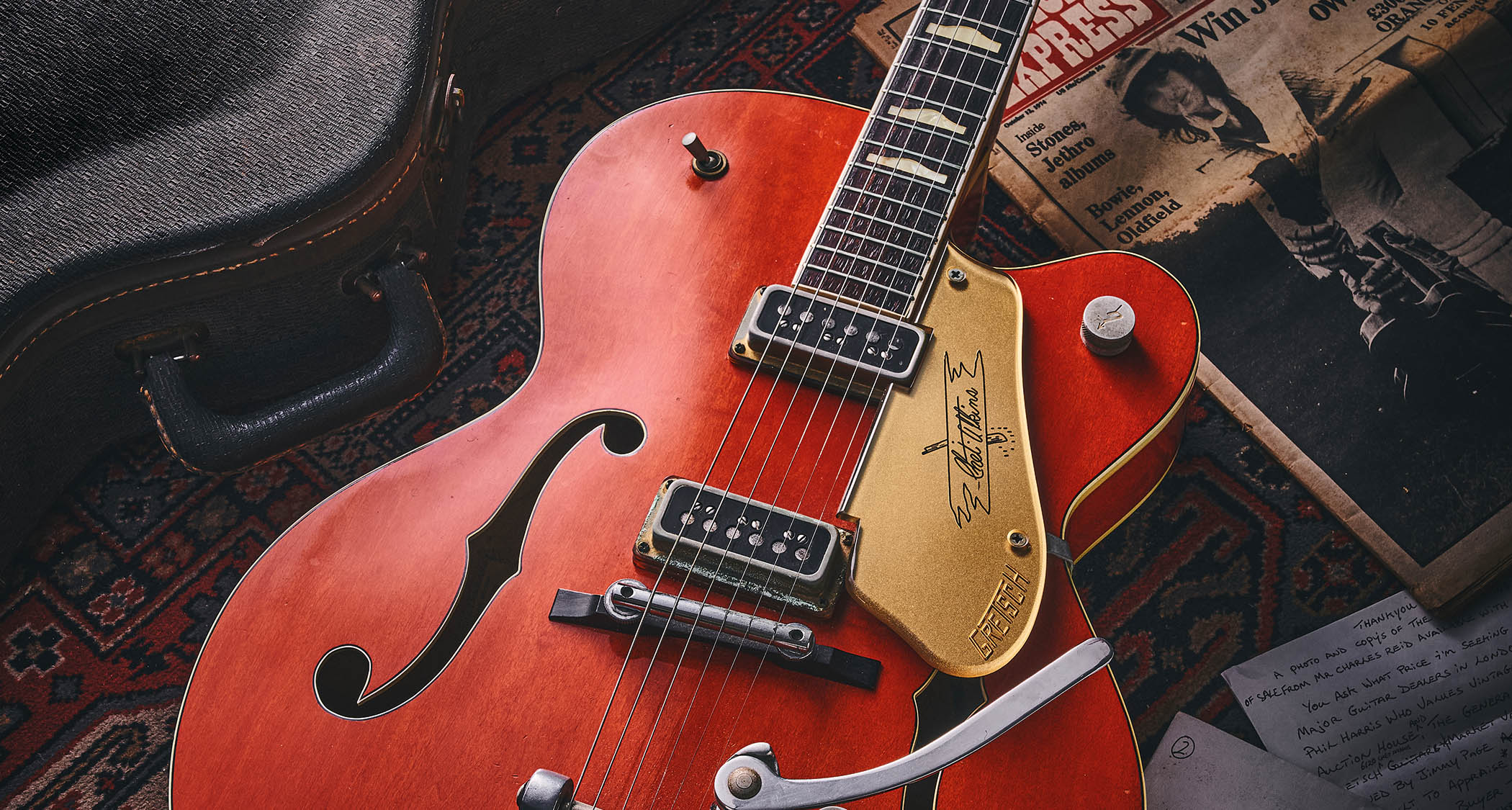
All the major electric guitar models evolved throughout the 50s and 60s, but Gretsch’s changes tended to be more seismic than incremental. The single-cutaway 6120 era lasted from late 1954, when the first ones were made, through to 1961.
In the intervening years, Gretsch gradually reduced the body depth, introduced two distinct variations of ‘trestle bracing’, transitioned from a dovetail to a mortice-and-tenon neck joint, adopted entirely new pickups and completely redesigned the wiring harness.
There were cosmetic changes, too, with cowboy kitsch fretboard inlays giving way to humpback and ultimately neo-classical thumbnail markers. Early 6120s had ‘G’-branded tops, and there were variations in pickguard shapes and placement.
Batch Maker
Gretsch historian Edward Ball’s scholarly reference book Gretsch 6120: The History Of A Legendary Guitar includes an exhaustively compiled analysis of Gretsch’s production batches on a year-by-year basis. Jimmy Page’s 6120 bears the serial number 23243, which places it about halfway through a 100-unit batch that rolled off the factory line midway through 1957.
The #232xx batch was one of eight 6120/6121 production runs Gretsch made for the 1957 model-year. Here’s where it can get confusing. Because with vintage Gretsch guitars, ‘model-year’ refers to a set of features and doesn’t necessarily correspond with the year of manufacture. It has been established that the first two batches of the 1957 model-year 6120s were actually made towards the end of 1956.
The same thing happened a year later when the first 1958 model-year 6120s with Filter’Tron pickups were actually made in late 1957. Edward Ball observes that dealers and customers placing orders towards the end of any given year may have received 6120s that looked very different from those depicted in Gretsch’s catalogue.
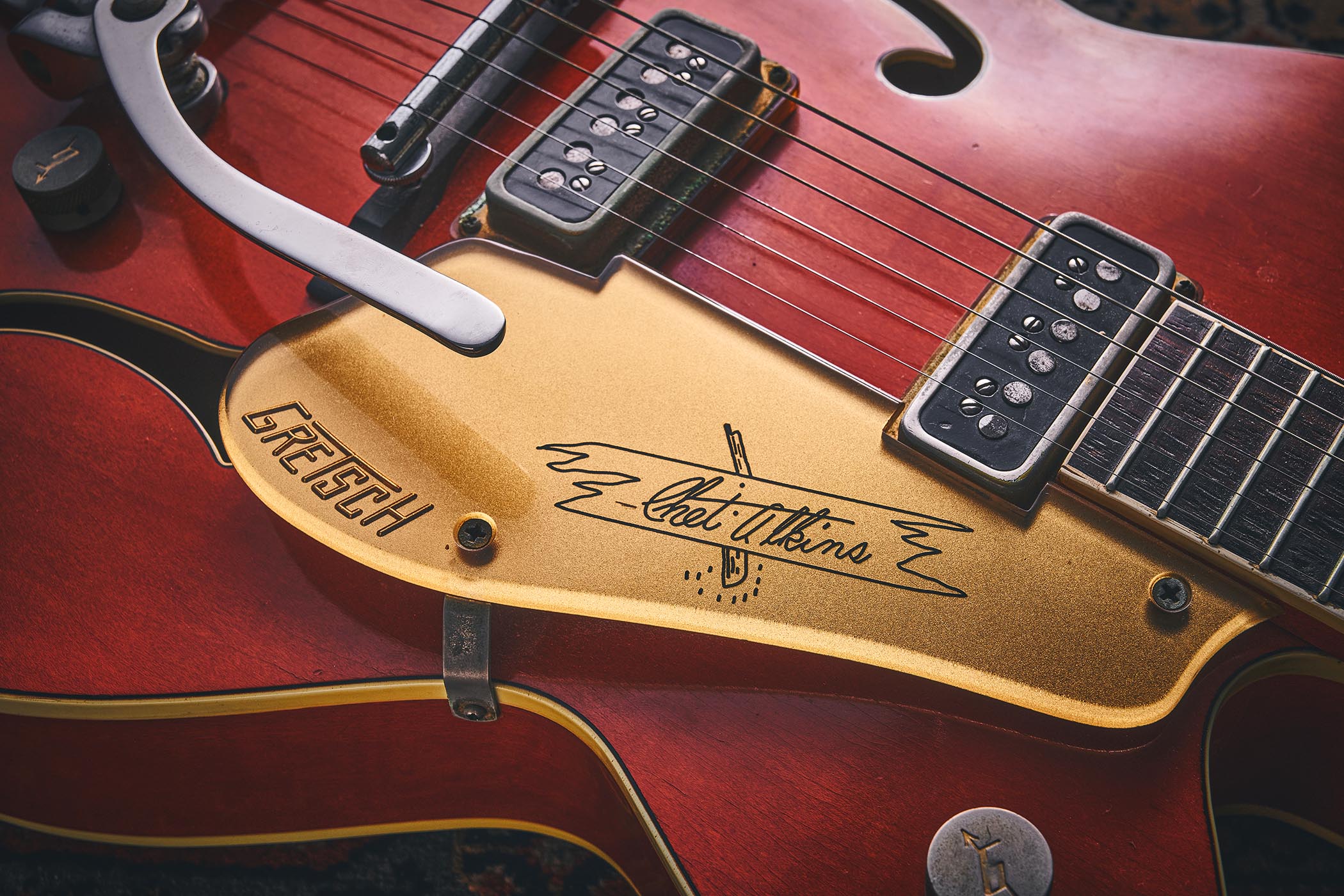
There would have been no surprises with this particular 6120 because it was made during 1957 and has all the features typical of the 1957 model-year. These included a non-compensated bar bridge and the G-indented control knobs, which replaced the earlier arrow-only design.
All the latest guitar news, interviews, lessons, reviews, deals and more, direct to your inbox!
Other 6120 features carried over, including the maple ply body, ebony fretboard and laminated neck construction. The placement of Gretsch neck centre-strips could be hit and miss, but it looks fairly central on this guitar. Gretsch also fitted screw-in strap buttons that work surprisingly well.
6120 hardware was gold plated, but it tended to wear off and, like lots of mid-50s Gretsches, the hardware on this example looks more like it’s nickel plated. While the brass nut shows some tarnishing, the original open-backed Waverly tuners escaped the ‘upgrade’ craze and appear elegantly aged.
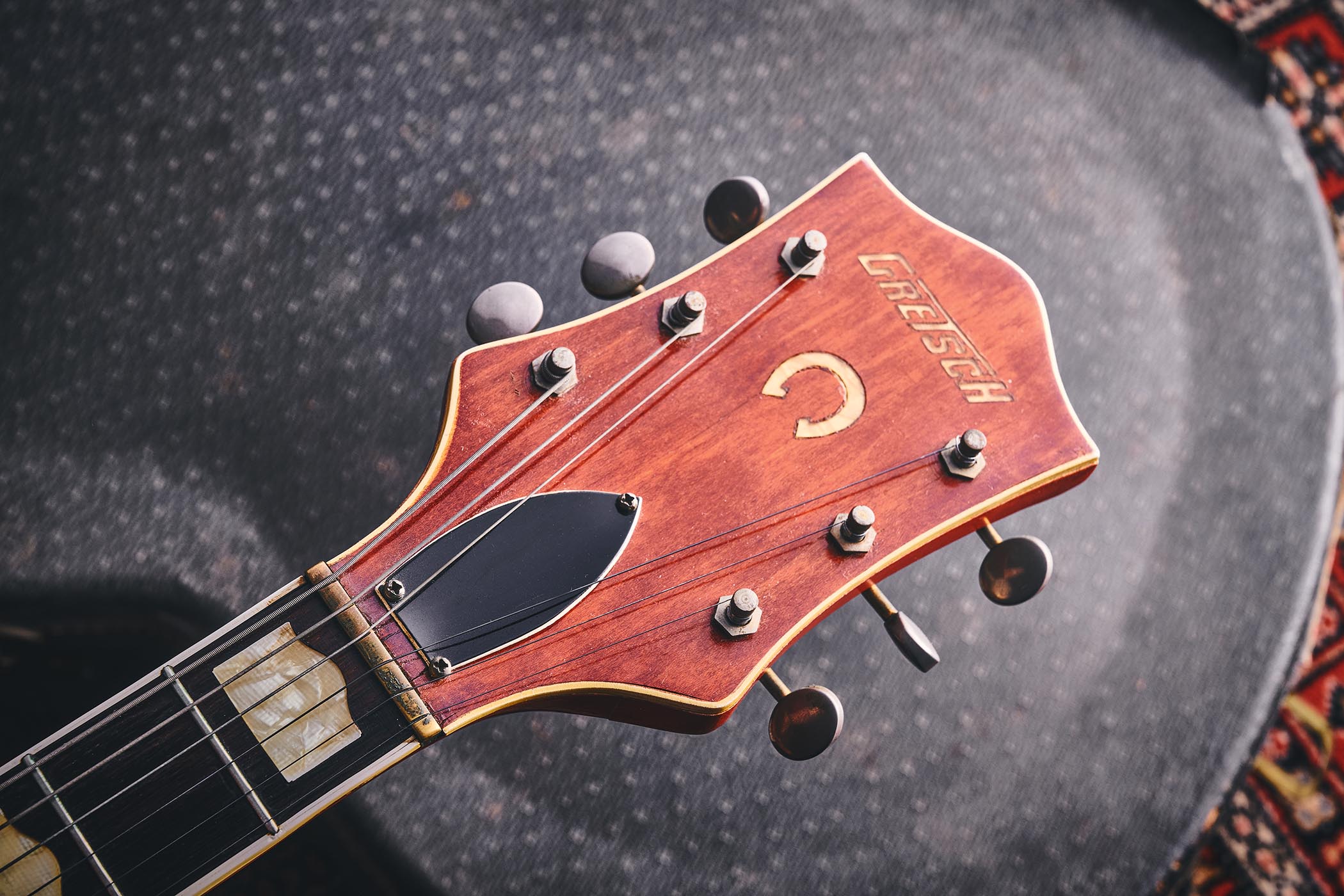
The DeArmond Dynasonic pickups divide opinions, even among Gretsch enthusiasts, but they’re known for their high output and near hi-fi clarity. Later wiring harnesses offered more options, including mute switching and the infamous ’mud switch’, but the 1957 model retained the individual volume controls, plus a master tone and a master volume located near the cutaway. The single switch is a three-way pickup selector.
Gretsch’s principal endorsee, the great Chet Atkins, was known to have felt embarrassed by Gretsch Western motifs and lobbied hard for Gretsch to ditch them.
The previous year had seen the discontinuation of the steer’s-head headstock inlay and the cow and cactus themed fretboard markers. For 1957, Gretsch replaced the transitional plain block markers with hump block inlays, put a more restrained horseshoe on the headstock and, no doubt to Chet’s great relief, discontinued the practice of branding a G into the front of the body as if every 6120 was a prize heifer.
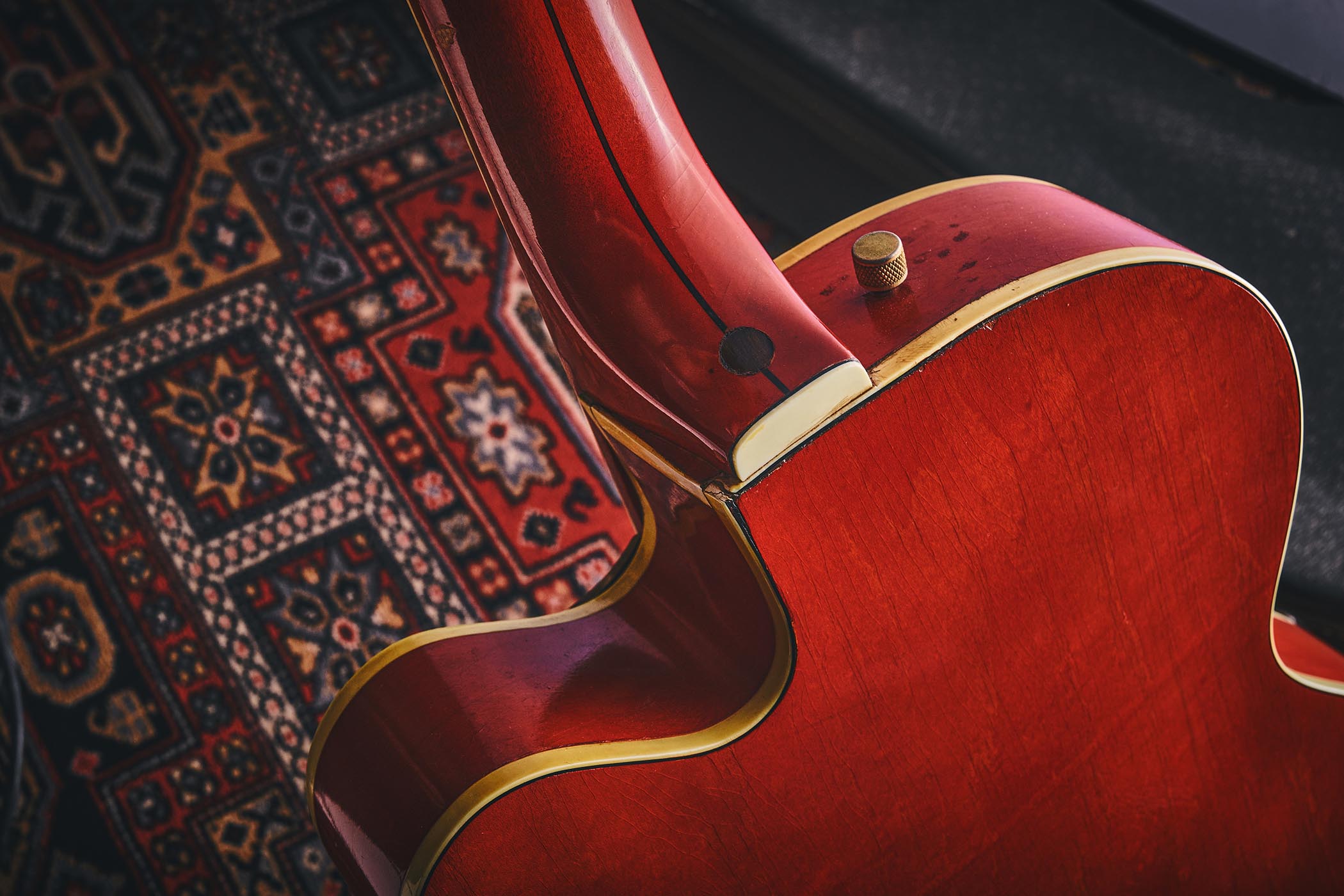
The Giveaway
Tastes change and these days most vintage Gretsch fans would snap your Bigsby arm off for an early 6120. Even back in the early 1970s, Jimmy Page specified a G-branded example when he asked GTR in Nashville to find him a 6120 because Eddie Cochran was an early inspiration.
Jimmy told the story to legendary music journalist Nick Kent in an interview for the New Musical Express – now known as the NME. Apparently, the guitar cost him £200 including shipping and customs charges, which he considered “very reasonable” compared with the $1,500 retail prices of 1950s Les Pauls during that time.
The interview is a fascinating read, not least because it is so full of contradictions and misconceptions. But it’s easy to forget that accurate information about 1950s guitars was hard to come by in the early 1970s. It was long before coffee-table guitar books began making sense of that era and the internet put all the information we could ever need a mere mouse click away.
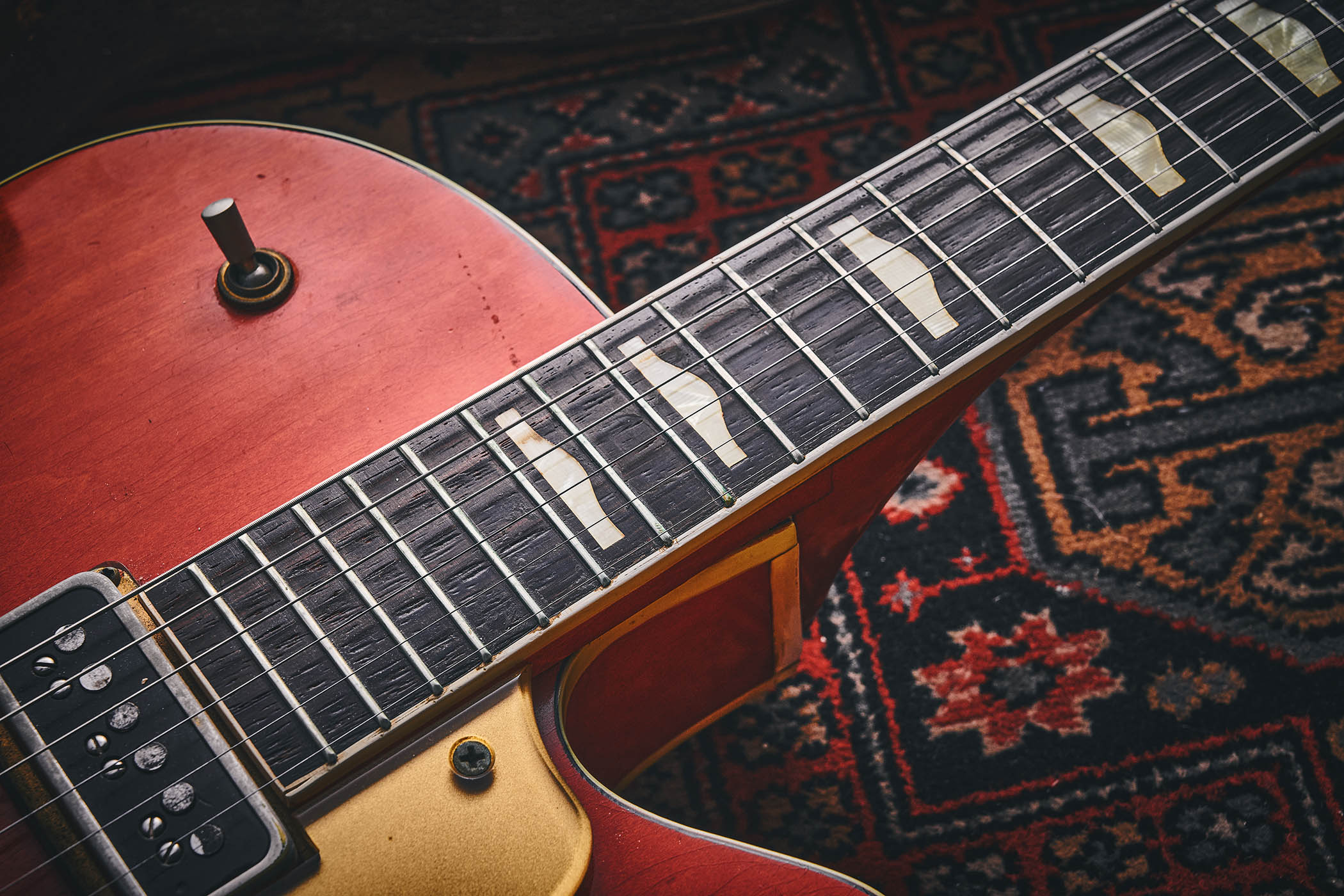
For instance, Jimmy wasn’t even clear on the model designation and believed its “technical name” was a “Chet Atkins Hollowbody”. He was aware that Cochrane’s had “an old block Gibson pickup by the neck” and had heard that there was another one just like it “somewhere in Tooting”. Jimmy also described his Gretsch as “a good all-rounder with good acoustics when it’s strung up properly”.
In the same interview he revealed that he didn’t own many guitars, so it was a generous gesture when Jimmy made his 6120 available as a prize in an October 1974 NME competition. In addition to Jimmy’s Gretsch, the winner could choose between £300 worth of Orange amplification gear or 10 “classy” new Fender acoustics.
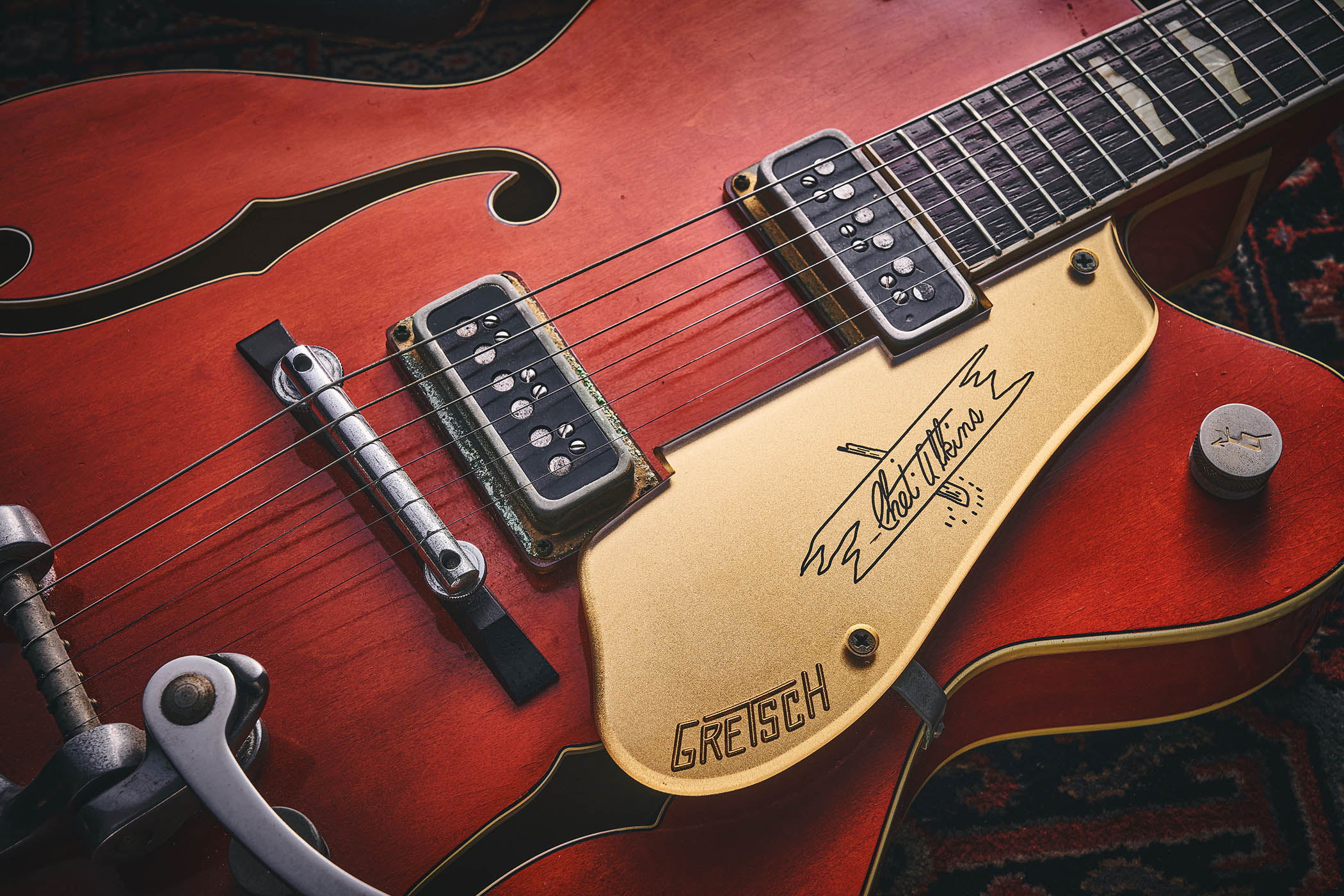
After matching six close-up shots of guitars to the names of the famous guitarists playing them, entrants had to complete the sentence: ‘I loathe the NME because…’ in no more than 25 words, with obscenity discouraged and wit and originality being the order of the day.
The winner was announced in the 18 January 1975 issue with the accompanying headline: “Stunned Paddy scores guitar, meets idol.” It speaks volumes about the era that ‘Paddy’ referred to the winner’s ethnicity, rather than his name.
21-year-old Dubliner Charles Reid was pictured next to a smiling Jimmy Page and described as a “North London exiled guitar picker”. At the time he was auditioning with London-based bands and he scotched a rumour that he was joining The Rolling Stones. In another photo Charles Reid is pictured with the Orange amps he wisely chose over the Fender acoustics.
The Wild Angel
No information about Charles Reid’s musical career has come to light, but we do know that on 16 September 1990 he sold the guitar to Phil O’Donoghue for the sum of £2,000. In today’s money, that would equate to over £6,250 so it wasn’t an inconsiderable sum.
A couple of years later Phil was considering the resale value and was advised to obtain documentation to prove it was the Jimmy Page competition guitar.
Phil wrote to Charles requesting a receipt and received one by post in April 1992. Phil O’Donoghue was a member of a long running rock ’n’ roll band called The Wild Angels and he kept the guitar until his death. Phil’s brothers inherited his instruments and they contacted Wiltshire-based auction house Gardiner Houlgate with the intention of putting it to market.

We caught up with GH’s auctioneer and head of guitar department, Luke Hobbs, for a detailed description of the guitar.
“It’s actually quite phenomenal,” he tells us. “The only thing that detracts is a bit of oxidisation around the pickups, but we’re not going to touch that because it has been there for so many years and it has that artist connection.”
The guitar shows very little playwear, but Luke reports “the original thin frets are quite worn so it has clearly been played a lot, but there’s no playwear on the back of the neck and it has been very well looked after. The finish looks great, so it has almost certainly been kept in its case because the orange colour is very bold and strong.”
Luke’s observation about the way the guitar was kept may also explain the oxidisation issue, which is something many vintage Gretsch enthusiasts have experienced. It’s caused by the celluloid pickup spacers degrading and emitting a gas that in turn degrades the gold plating on the pickups.

It’s very common with Gretsches from this era and it can get particularly bad when vintage Gretsches are kept in sealed cases because the gas can’t dissipate in the atmosphere.
Currently the action is set low and the strings are pretty light, so it’s a very easy guitar to play
The spacers can eventually crumble away, but you can buy or make replacement celluloid spacers, and it’s far better to retire the originals than to risk damaging vintage pickups.
“Currently the action is set low and the strings are pretty light, so it’s a very easy guitar to play,” Luke continues. “It’s extremely resonant, but the strings are so old I don’t think we’ve heard it at its best and it’s hard to give a definitive opinion. It certainly doesn’t need a neck reset, and the action is low with a bridge that is set fairly high, which is usually a sign of a solid neck joint.
“I’ve done what I can to trace Charles Reid, but I haven’t had any success. But in some ways it’s almost irrelevant because we have the letter from him to Phil O’Donaghue. We also have both copies of the NME that featured the guitar.”
![Led Zeppelin - In My Time of Dying (Live at Earl's Court 1975) (Official Video) [HD] - YouTube](https://img.youtube.com/vi/2MgzKOxl1bE/maxresdefault.jpg)
Rare Opportunity
It’s interesting to consider how much value the Jimmy Page connection adds to the guitar. “Well, a typical hammer price for a Gretsch 6120 from the mid-1950s would be £7,000 to £9,000,” Luke suggests, “but one in exceptional condition like this could even nudge the £10,000 mark. We’ve put a £30,000 to £50,000 estimate on it, but, to be honest, it’s just a stab in the dark.
Page must be mental giving away such a terrific guitar
“So far as I’m aware, only three of Jimmy Page’s guitars have ever come onto the open market. He’s notorious for not selling or giving anything away. He certainly hasn’t been in touch with us, and famous artists are never that interested. We often try to make contact simply for authentication purposes, but they don’t want to get involved.
“I’m sure Jimmy has amassed a huge collection by now, but back then he didn’t have that much stuff – just the tools he wanted for his arsenal – and in the NME article he indicated that he only had his iconic Les Paul, a backup Les Paul in case he broke a string, and his doubleneck. That’s what he said he had been using, but he probably forgot to mention his Telecaster, and he referred to an acoustic that he no longer had.”
Charles Reid declared that “Page must be mental giving away such a terrific guitar”.
He was not wrong. Page's Gretsch sold for over three times its estimate, fetching £100,000 ($135,366).
- With thanks to Gardiner Houlgate for allowing us access to this guitar
- This article first appeared in Guitarist. Subscribe and save.
Huw started out in recording studios, working as a sound engineer and producer for David Bowie, Primal Scream, Ian Dury, Fad Gadget, My Bloody Valentine, Cardinal Black and many others. His book, Recording Guitar & Bass, was published in 2002 and a freelance career in journalism soon followed. He has written reviews, interviews, workshop and technical articles for Guitarist, Guitar Magazine, Guitar Player, Acoustic Magazine, Guitar Buyer and Music Tech. He has also contributed to several books, including The Tube Amp Book by Aspen Pittman. Huw builds and maintains guitars and amplifiers for clients, and specializes in vintage restoration. He provides consultancy services for equipment manufacturers and can, occasionally, be lured back into the studio.
You must confirm your public display name before commenting
Please logout and then login again, you will then be prompted to enter your display name.


